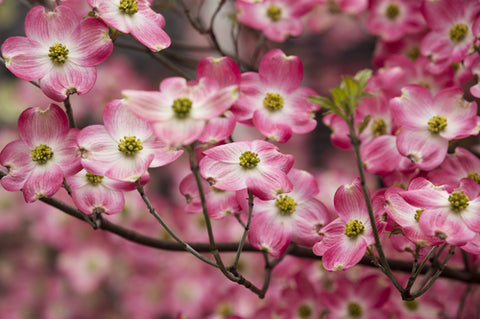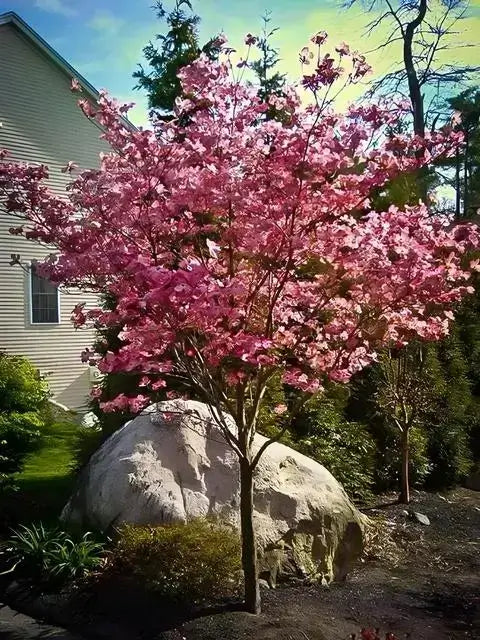What Is A Pink Dogwood Tree?

A pink dogwood tree is a medium-sized deciduous flowering tree. It grows 25 to 30 feet tall and can spread up to 20 feet wide. The bark is smooth dark gray-brown, and the branches are lighter gray-brown.
How Do You Take Care Of Pink Dogwood Trees?
The Pink Dogwood requires full sun exposure and well-drained soil to thrive. The tree's shallow roots make it susceptible to drying out, so keep the soil moist but not soggy at all times. If you have heavy clay soil, consider adding topsoil or sand to improve drainage and aeration in your garden bed where you plan to plant your tree.
How Much Sunlight Can A Pink Dogwood Tree Take?
If you come from an area where temperatures get below freezing in winter, it is best to plant pink dogwood trees in full sun or partial shade (with protection from the afternoon sun). The more sunlight your tree receives, the faster it will grow and flower.
Do Pink Dogwood Trees Back Up Every Year?
The answer depends on your location and the type of soil in your yard. In general, pink dogwoods will back up every year if planted in areas with good drainage.
What Does A Pink Dogwood Tree Look Like?
The pink dogwood tree boasts clusters of fragrant white flowers, bell-shaped petals, and a pink blush. Each flower usually has numerous stamens that have red tips at the top.
Where Do Pink Dogwood Trees Grow?
Pink dogwood trees are native to the Eastern United States but have been introduced to other parts of the world. They grow in zones 5 through 9 to tolerate cold weather.
What Are The Environments In Which Pink Dogwood Trees Grow?
These trees do well as understory plants along streams and rivers. They grow well on hillsides where they receive full sunlight but are protected from strong winds by taller trees or structures such as stone outcroppings or buildings.
Are Pink Dogwood Trees Toxic?
Pink dogwood trees are toxic if eaten by humans or animals, but there are no known cases of toxicity from contact with the bark or leaves.
How Do You Plant A Pink Dogwood Tree?
You can plant your pink dogwood tree in spring or fall. Dig a hole at least 12 inches deep, place the tree inside and fill in the hole with soil and water well to ensure good root growth.
How Do You Care For Pink Dogwood Trees?
If you are from an area with low humidity, misting your pink dogwood with water will help keep its leaves healthy and shiny; misting once every week or two will be sufficient for most climates unless there is a drought situation where you live.
How Did Pink Dogwood Trees Get Their Name?
It is an old English name where the fruits were edible but not to dogs. And also they were used as skewers, also known as dogs because they were strong enough to hold food while cooking over open fires.



















































